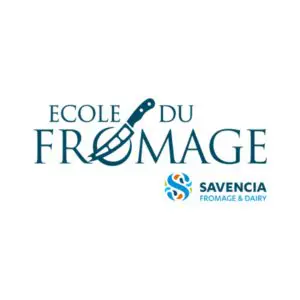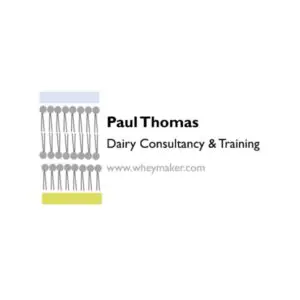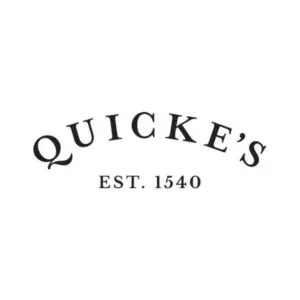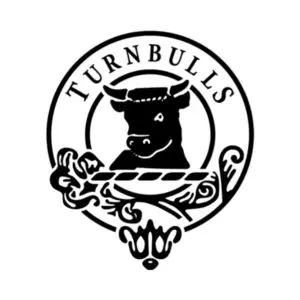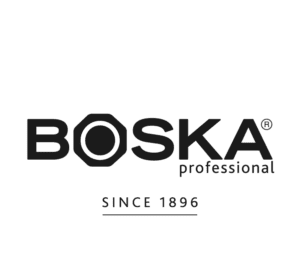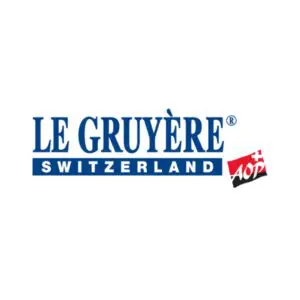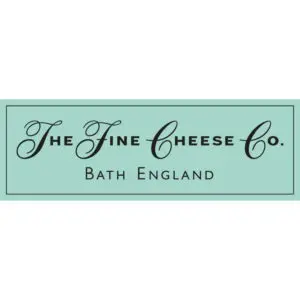TNCN Tour des Fromages de France with Noemie Richard. One of Charlie’s all time favourite cheeses is the Ossau Iraty from the mountains of south west France. Charlie asks Noemie what other great cheeses come from the French Pyrenes
Streamed live on Oct 6, 2020
GUIDE TO TASTING CHEESE
Learn about the four stages of tasting cheese and how to take tasting notes with this definitive guide to tasting cheese.
Cheeses come from the French Pyrenes Episode Video Transcript
Okay people out there at quarter past eight, I am extremely sorry knowing me and myself have been talking to ourselves for 15 minutes thinking we were broadcasting to you the people highly embarrassing. We think that we’ve been having a great conversation here when you’re not there.
So thank you Alison for asking the question are you having techie problems because we didn’t know it. But we were so uh we’re not live okay okay we were brilliant though Noemi i think we were prepared we know where to go now yes so we have to start again um nothing right okay so wait what should we talk about tomorrow tonight no amy okay let me think about it well i think considering the weather outside you know it’s getting dark it’s getting cold it’s raining so i would suggest we go to a sunshiny warm region and uh yeah i want to get you to the basque country are you up for it what a good idea i think that’s amazing it’s lucky that i’ve pre-prepared some some nice slides for us to go along with with our with our little um uh a little presentation here even if we’re running right okay now i’m i’m because i as you know as far as we’re concerned uh uh hi angus nice to see you um uh it’s called i think now we should change our plan knowing i think we should eat some cheese because people are you know they they they wanna they wanna get it on the act no doubt they’ve got cheese boards in front of them hopefully a glass of wine maybe even a basket or a burned kind of a glass of wine um change the plan go straight to cheese what do you wanna take us to no problem i’ve got i’m i’m ready for it i’ve got here my nice also iraqi sq so also is a pdf variety so we find many producers in the basque country that will make this cheese with certain specific conditions that you won’t find uh in other cheese so there is what we call the que de charge the list of criterion that the producer needs to stick to um to make this cheese you can’t call it no soerative if you don’t do it in edius in any other space of france or of the world and what i’ve got here with me is literally the best piece of the world 2018 from the world cheese contest in america and wisconsin in 2018 so it’s the esq and sqo is a really uh gathering the whole characteristic with even more intensity and some very nice subtle fertilities that we’re gonna talk about first thing um the oscerati is obviously uh sheep milk cheese okay because we are in uh we are in a region of of sheep we are in a region of shepherd of pastoralism where there are three important breeds that have been raised by shepherds for many years why she because they managed to adapt well to the climate and the condition of the region we are in a region influenced by oceanic uh oceanic climate in a region where there’s a lot of rain but it’s also warm so we want the risticity of of ship to get adapted and yeah that’s how we got to get nice um hard cheese with sheep milk yes why hot cheese again sheep milk can only can only be produced during six months of the year because the the sheep will be melt from december to june no much more than that and we need to make a cheese that will last the rest of the year and we need as well to um get cheese from the mountains that we can bring back to the values so that’s where uh the hard technology was was was created was used and uh this is a cheese where we’re gonna we’re gonna cook the curd and we’re gonna press it so it can last uh longer so without expecting more in terms of of sensory analysis of this cheese you can see the color i think you have it too it’s quite a yellow intense color and this is due to the source of meditation now there’s got a whiteness to it i mean it is it’s not it’s nothing like as yellow as cheddar for instance you know it’s a yeah so for sorry yeah you’re right you’re right but for a sheep milk sheep is generally quite a cream color so for sheep milk it’s quite yellowy and why because six months of maturation will uh intensify the grass uh yellow color and also you find two two type of of also iraqi you find the big wheels are four kilos or you’ll find this specifically for the sqo it’s only 2.5 kilo so by having a smaller wheel we’re gonna make the maturation more more intense and then the color more intense as well and that’s also why you can see almost brown color uh and uh under the rind yeah i for me it’s a indication of a good quality osorati is to get that brown intense rhine development and lock in the flavor that would be too simplistic but i feel that it’s an indication that the flavor it has arrived i mean sheep’s milk for my my take when it’s young can be quite dull you get quite fatty it’s quite white the flavors are it really needs age to bring about the best it can be yeah i agree i absolutely agree and actually in the in the nose as you smell the cheese you can you can find this farmyard very strong sheep and sharp uh notes come here you’re also getting notes of of um of dry hay and and and and there’s a bit of the milking parlor there too yeah yeah and and also of course the the rinds will be much more into kv notes into um um sometimes of a bit of of a fish yeah as well yeah yeah and i can i can i can feel fresh fresh grass um you know like uh um yeah fresh grass just just recently uh cut um but that’s what is interesting when you then try the cheese and i’m gonna make some jealous here once you’ve passed the nose step and you eat the cheese this is where the cheese is gonna open completely so on the palette there is a sweetness a sweetness that will make the intensity of the farmyard nuts gets get lighter and by chewing the cheese you will you will release some uh aromatic notes uh more like toasted toasted um toasted universe so uh yeah thank you um yeah caramel chocolate this cheese for me it’s pure chocolate it’s it’s really into uh into this rich um um yeah strong roasted character um that you can find also um we are here in a trees that’s been produced six months earlier so it’s almost the best time to uh to have to have this because we want a nice maturation to enhance the flavors um and by enhancing they’re gonna develop flavors more like fruity flavors kind of ripened fruit um perhaps uh ripened fish or apricot you will find it in in in more in oldest uh older cheese so tell me what is a good age for a cheese like this where do you find it i have quite strong views about this but i’ll let you go first for me you for me the six months are a critical time uh now again it will depends on what is the size of your cheese what is the recipe there are some regulations but there’s also the hand of the cheese maker obviously that will make the difference but for me um and also iraqi will start to get his identity after six months when it’s too young i will get more of a of a row ship um character rather than all the subtle flavors that we’ve that we’ve mentioned another thing that you’ll develop with six months is these crystals this uh tyrosine or small peptides small protein crystals and that will give very slight crunchiness that you can’t really get much before i did tasting on this with a different cheese maker and it was interesting he had a pasteurized and an unpasteurized now obviously the conventional thing that you want to age a pasteurized cheese less long than an unpasteurized cheese but what he was doing was washing the outside with continually washing as part of the wash with a bacteria wash so he was introducing a bacteria washington to the outside and the unpasteurized cheese peaked at around 12 months sorry the pasteurized cheese picked her out on and the unpasteurized cheese peaked at around seven months and the uh and the pasteurized cheese out performed consistently in competition and that kind of thing and and it and i think it goes to show that the way that you introduce complexity by using a bacterial wash they’re bringing flavor in around the in a different method and produced a really interesting outcome and there’s an awesome i i it’s one of the reasons i think it’s such an amazing cheese it’s got other ways it’s other ways of introducing flavor yeah yeah absolutely and actually it’s good that we that you mentioned it but because in osuerati you have two style you have the dry brushing of the cheese so in dry atmosphere dry condition which is the case of the esky room or you have the brine washing well the bry washing actually yeah so it’s different between brushing the cheese and washing the cheese and that’s obviously as well gonna make a difference in the intensity of the of the heart of the cheese want to draw attention i don’t know if you can see that can you see a an indent in that little corner of the top there so the way that they mark these two the cheese maker marks the cheeses he has these little um uh i don’t know what you would call them medallions or brands or so they press them into the top of the cheese when they’re making the cheese and the reason they do this apart from to get the uh get a bit of brand action so people recognize and follow their cheese but i’m right saying naomi that these cheeses will be matured not by the cheese maker but by some sort of effinger in one of the villages of the pyrenees and is it is in the old days these cheese makers would be up in the hills all the time they don’t have the environment they’re not you know they’re not static enough to take their cheeses with them so a cousin or an aunt or somebody in the village would look after the cheeses and bring them on get them to the age and often sell them and and then take it from there absolutely absolutely and also because um to do one of these trees you need ten times ten times the weight in liters so a two kilo will is at least 20 20 20 liter of milk if you want to do 100 200 wheels you will need lots of pearls so that’s why the cooperative system is gathering melts producing milk together and then bringing it together from different health to the um and if you don’t gather if you don’t cooperate it’s very hard to work out um in this style of cheese and with with uh sheep milk um so yeah absolutely and one thing you mentioned about the engraved uh logo there’s actually a a slight difference between whether the cheese is a farmer cheese or if it’s um from the creamery from the afina if it’s a farmer cheese so if it’s made directly from the farm you will have a full face of uh of the sheep but if it’s from a creamery it’s just the profile of the ship so it’s a way to know as well yeah that is cool okay i’ll be checking my sheep’s profile on all the cheeses right so so let’s have a look at some of those sheep you’ve got some images for us let’s have a look at this so for people who want to know where we are we are in france we can clearly see the um the basque country in the bottom left-hand corner it’s the sort of french equivalent of cornwall uh and this is i never thought about it like that but let’s say let’s say it’s a kind of tunnel yeah so you can see very well the two capital very emblematic city of the basque country in france bearish and bayern bayern where the famous hambayan is from um and also you have just in the the the defeat of the pyrenees saint jean-pierre du pietpo sergeant is the actual starting point of sanjay the compostel path so for religious people it’s a very important important city and actually also iraqi the the name comes from two area comes from the oso uh peach also mountain which is on the east side so where you can see the lava city is where the very close to there is the oso peak on the pirates mountain and irati refers to the iraqi forest and because they’re actually are different regions we have the bay basque on the western side and uh on the on the east eastern side it’s the bern and to gather the two regions they created this name so no one would feel uh excluded and both region will get the australia as part of their identity yeah i’m i’m a skeptic um i i i think that um uh well when i went there anyway the people of the valley dorso were skeptical about those from iraqi and the people from iraqi didn’t really like the people from oso and i think this is kind of a marriage of two people who you know would prefer to live in separate houses um exactly exactly exactly but it’s also what made what make this region uh and the basque people so um so so special so unique they they really the best country the best tradition is is over really uh knitted community with strong traditions with a proper language um i um mentioned the world the only world i know in the in basque but you can still find people talking just in basque in this in this region so there’s a strong identity and that’s what makes it uh so special as well and that’s what we want i think to protect because um we want to we want to keep these these traditions um well let’s let’s meet the cheap so these are the three breeds of sheep that are endemic to the region are unique to the to the region um he’s a handsome looking person or probably lady to be honest and who is she well i introduced you to to black head manish blackhead manage is the most rustic sheep breed that you can find it uh it really can survive and keep producing milk wherever you put her so sometimes in difficult conditions or where where the weather is not that great and the grass is not that green um they are very good producers of milk so it’s words it’s renowned so we can find uh we can find a lot of the of this and she’s got a sister actually the next one which is the ginger head and ginger head remind her as the princess okay because it’s completely opposite she does not want any difficulty she barely tolerates the rough mountain area but she’s a great milk producer so generally she’s in the in the biggest proportion in the in the head and yeah under the cousin uh this is the basketball harness so basketballness i would say it’s in between both uh it’s very good walker um she’s very well adapted to long walking journey and she will produce a nice amount of milk as well so we have to bear in mind that these animals in this region will graze two thirds of the year so it’s quite a lot of time outside so they are overall all of them very rustic and um and they’ve been raised for hundreds of years so the genetics have been developed for managing and adapted to this this area they like taking pictures as well yeah okay so um uh that brings us to our last and our last cheese now you talking about the great heritage of this region they’ve been making this cheese and the sheep are bred into it but this is the buddha bask which is frankly a babe in arms exactly this is uh you your piece is nice because you can see actually the the real uh you know vertical strikes uh in the cheese and um that shows very well that it’s it’s a region uh let’s face it it’s a region of hard cheeses it’s not a blue cheese region it’s a region where we press the cheese and we keep them for for long for a long time and as we have the osuira tea or the esky style we can find other style most known under the name of tom tom de pirene and i think not not before 2000 2001 some cheese makers decided to diversify and to try and incorporate the blue mold into the cheese and this is where the blood basque were born so basically we will maintain the cooking of the curl the pressing we will uh drying properly the cheese as we do for oswegati we will have more moisture into the cheese why because we then um will then want to develop the mold so don’t take me wrong we have to put the mold from the very beginning so as you do for rock for stilton the mold is inserted in the milk but you will then perforate it as you do for blue cheese production and then allow the mold to develop from the center to the rind and this is a very light color very light color rolled it’s um it’s really scattered throughout the throughout the cheese and um and it will bring uh obviously the identity with the time it makes the cheese much more creamier we are here in a quite young uh profile so we can still find the firmness of the of the of the thumb style but as we go as it develops it will get it will get creamier it’s i mean i don’t think this is um all are made like this but you can see from this one that the the holes uh the lines have been pierced from the top i don’t know if you can see the needling paste there but it does not appear to have been pierced from the bottom is that typical of the cheese or just the cheese maker it’s a it’s the cheese maker it’s the cheese maker um every cheese maker will have its own recipe and the perforation of the cheese is part of the recipe it’s really part of the recipe almost like you’ve got going on here at the top we’ve got the vertical strong lines and then that peppering that is more towards the bottom where you’ve got uh the the mold is in increasing amongst the cracks the crevices of the cheese itself um very very just different types of molding up there when i opened this today um the mold was not there it was it was it was just a fraction poundless and it died right back in just a couple of hours and the mold springs back into life and comes into the cheese so i’m guessing now for reasons that are slightly disappointing i’m on a no cheese week which happens periodically um but i’m guessing that by the time i get to this cheese next week and can tuck back into it we will see much more mold in the cheese breaking open that curd making it tasty very exciting yeah that’s true that’s so true same i think we will keep the mold i believe that you’ve got a treat for us on the on the cooking recipe for for go on god do one of your demos naomi i want i want to see you so i want to see you wield your your culinary skills i think i’m very uh happy to find simple things to do with uh great ingredients so that’s that’s my uh my signature um yeah so one element we talked about traditions we talked about uh the basque character we didn’t mention i think the uh pepper which is a very typical ingredient uh in there so again we talked about the the climate the area it will give flavor just in between the spiciness and the sweetness so it’s got very uh unique identity it’s a pdo as well pdo products pepper and the basque will use it will generally leave it dry on the front of their of their house you will find series of channels of of spelled pepper it will dry and then they will they will make it powder make proper pepper or um also and this is what i’ve done i’ve done here you can do nice espalette chutney and the basque has reinvented a very simple recipe which is [Music] a bit too simple actually so everyone’s got something like that um this is a cheese toaster that will go to the oven straight away so you use some fresh bread we will get our also hearty slices that i pre-cut it i will put on top of the bread and then we will place our espalette espelet chatney on top of it i close it with my seventh slice of bread and there we go straight to the oven and as if by magic and by magic we get our nice coke bask which is the derivate the basque version of the monsieur ideally we would have added some bayern ham i didn’t have with me um but yeah it’s very simple it’s just a great uh great treat it’s very tasteful and uh it’s a good way to enjoy your suirati because you will balance the saltiness of the cheese with the sweetness of the chatney and you will crunch it with the toasted toasted bread sorry i have to say who says french cooking is complicated even i can do that that seems very straightforward i will make one i must get one of those peppers um uh you say they’re available in the uk i spell it pepper yeah you can find in some very french gourmet uh stores okay well well i’m gonna i’m gonna find some out i always like a bit of experimentation um i think that we should recommend to everybody who’s watching to head down to the to the basque pyrenees and the i’ve got the pronunciation of the uh um uh what was that other t area you talked about the bone the bar mia laurent the bear the band so this goes to show my opponent pronunciation so awful the baron it’s a lovely part of the world i promise you’ll find it absolutely gorgeous when the sun is out and the sun’s on are crawling across the hills it is one of the most beautiful places of france i’ve ever been in france it’s pretty packed if i may if i may and uh obviously hoping things get things get better um the great best moment to go in uh in this region is the first week of august if you want to book it for 2021 uh first week of august it’s really literally five days and five nights of pure celebrations in the streets of bayern of barrett people are dressed in white and with a red scarf and they’re literally singing gaming dancing they have as well cow rays they well a bit of alcohol as well to enjoy uh all of it but it’s it’s called the feria uh of bayern of basque country and it’s really five days of uh discovery of the basque tradition you can also have the chance to play the pilot basque which is kind of a historic tennis style game yeah and uh so yeah first week of august is the moment to be there but obviously you can go anytime as well that sounds amazing last week we were talking about doing an academy of cheese trips to santiago now now let’s let’s it’s a little bit easier to get to let’s go down to beer it’s i’ve never been to beer it’s apparently it’s stunning so now we thank you thank you so much for for coming on um even if we did have our false start and thank you the people watching for staying with us while you’re looking at a blank screen while we were gayly talking to ourselves expecting everyone to find us little chat so i’m using so goodbye and we will post it okay what’s it angular all right
